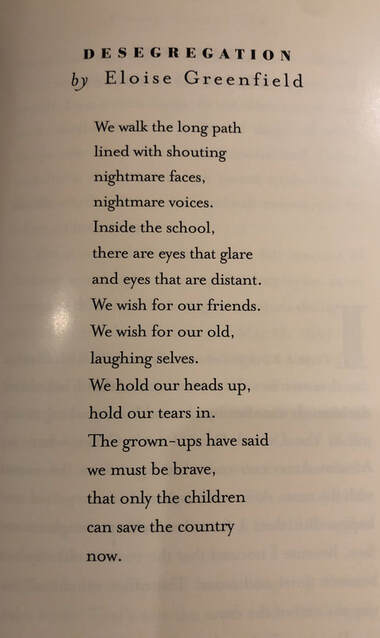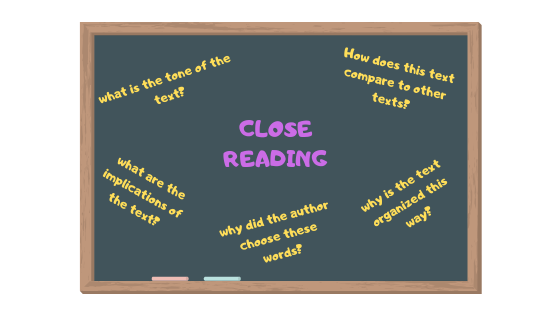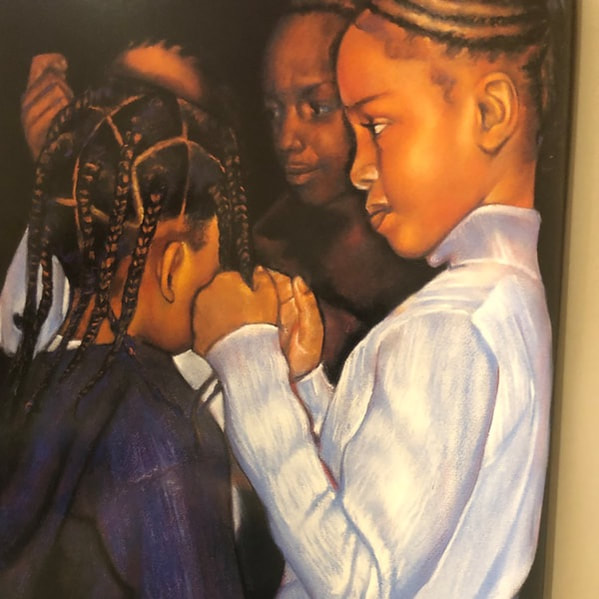 In close reading, students focus on the information provided in the text. The students read the text three times. The first time they read independently. The second time the teacher reads aloud. The third time the students read in groups or with a partner. Scaffolding and differentiation are built in to the process. Each step builds on skills learned in the previous step and text length can be altered according to the needs of your students. Close reading can be used across content areas and provides a strong foundation for critical thinking. Close reading is an interaction with the text and discourages front-loading of information. But, teachers should pre-teach difficult vocabulary, provide a brief introduction to the book, and inform the students that they will read the text three times. Teachers must create text dependent questions for each time the students read. First Reading - What does the text say?
Students should "read with a pencil," annotating the text as they go along and taking notes on a post-it or in a journal. Teachers can ask students to circle words they aren't sure of, underline key vocabulary, star passages that are important, and write down questions they have about the text. When choosing a text for close reading, the teacher should consider the following aspects:
Here is an example of what close reading looks like using a passage from the book Linda Brown, You Are Not Alone, a collection edited by Joyce Carol Thomas. I chose a poem titled, "Desegregation" by Eloise Greenfield. The poem could be used in conjunction with a unit on Civil Rights. So before they participate in the close reading exercise, students would already have an idea of the issues surrounding desegregation of schools. First Read The girls are walking in to a new school and have to walk past angry people who don't want them there. Even inside the school, they see unfriendly faces. They miss their friends. They are trying to be brave and not cry. The theme of this poem is courage in the face of adversity. The grown-ups told them to be brave and that by doing so, they can save the country. Second Read Think about what "glare" and "distant" mean in this poem. Glare means staring at with dislike – the other students inside the school are angry with them for being there. Distant means not focused on the moment - that some of the other students might not want to get involved and they are trying to ignore how people are treating the kids or acting toward them. One of the girls is telling the story. She talks about how it feels to walk through the angry crowd, how they miss their friends, and how they are trying to be brave together. The author is trying to portray the feelings the girls had while walking into the school. They are African American girls going to a school that used to be all white and they aren’t really wanted there. But, they are still going because the grown-ups told them to. They are trying not to cry and trying to be brave, but inside they are scared. Third Read In the picture we see four girls, standing in a circle together. At least one of them is crying and the others are trying to comfort her. We get the impression they are banding together against something or trying to encourage each other to stay strong and be brave. I think one of the girls might be younger than the others and they are trying to wipe her tears and fix her hair. Compare Greenfield's poem to the following poem by Carlotta Walls LaNier The bus is hot, the white neighborhood full of angry faces just two miles from where we live, angry faces I see at night when I look out the window and wonder why I have to sit next to white children to be smart...I was smart all the time, my mama told me so when I did things the right way, extra things, good things, smart is knowin when somethin's missing... LaNier's poem talks about angry faces, instead of nightmare faces/voices. The word nightmare is stronger and gives a more vivid image in your mind. The first poem is about a group of girls walking into school, the second is focused on one girl riding a bus to a school. The first poem focuses on the walk in to school and how the children feel about what they are going through. In the second, the focus is on one girl wondering why she has to go to a different school to be smart. The first poem doesn’t bring up race explicitly, even though we know the girls are African Americans going to an all-white school. In the second poem, the girl talks about wondering why she has to sit next to white children to be smart. The first ends with an idea that the girls are facing these angry people and scary, uncomfortable feelings in order to improve life for others and make the country better. The second poem ends with the girl saying she knows she is smart and wondering why she has to go through all those angry people to get to a school where she isn't wanted. The something that's missing could be her friends, it could be that good teachers are missing from her school, or even that kindness, empathy, and understanding are missing from the angry people. Further Resources: Videos: McGraw Hill: Complete Lesson, Modeling Close Reading of Short Texts Link Teachers-pay-Teachers: Free link to Close Reading Introduction for upper elementary students Link Podcasts: UnBoundEd: Diana Leddy and Amy Rudat discuss close reading for elementary students. Link Books: Teaching Students to Read Like Detectives by Douglas Fisher, Nancy Frey, and Diane Lapp. Not sure how close reading works across genres? This resource focuses on ways to approach narrative, argumentative, expository, and new-media texts. Notice & Note by Kylene Beers and Robert E. Probst. Featuring six complete lessons, this book also covers everything you need to know about text complexity, rigor, and text-dependent questions.
0 Comments
Leave a Reply. |
Patricia GittlemanMom. Reader. Teacher. Librarian. Lifelong Learner. Archives |
Proudly powered by Weebly



 RSS Feed
RSS Feed